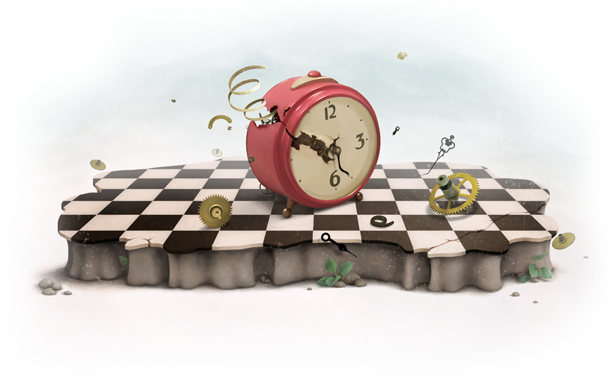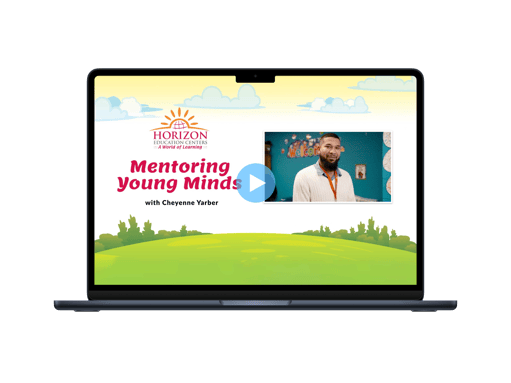
You walk as quickly as possible (there’s no running indoors!) and plop down cross-legged on the brown carpet. You know you are about to be transported somewhere new: outer space, a pirate ship ... maybe a magical forest. As the pages turn, you forget you’re in a classroom. You lose yourself in the story—all of a sudden, you’re discovering new planets, winning sword fights and swinging from vines.
How great does that sound?
It’s no wonder we loved story time back then.
Even as adults, we are captivated by the power of a good story. That’s a valuable piece of information for marketers who are in the business of capturing buyers’ attention and can use marketing storytelling in their inbound marketing efforts.
Storytelling in marketing is a powerful yet immensely underutilized tactic. Take The LEGO Movie, which Marcus Sheridan once called “the most effective 90-minute commercial for a ‘toy’ we’ve ever seen.”


Think of lead generation and marketing automation campaigns as three-act narratives that guide visitors through your story. If you fail to captivate your audience at any point, you could lose their attention forever. A good story is well-told, compelling and inspiring, resonating with your audience where they are.
How do you make sure your story moves the reader (or listener or viewer!) from 'once upon a time' to 'happily ever after'?
Your hero should inspire your target buyer, but here’s the secret: the “hero” is your customer. As the Copyblogger points out, “The hero of the story is the one who is transformed as the story progresses, from an ordinary person into someone extraordinary,”—all thanks to your product or service, of course.
The task of storytelling marketing may seem overwhelming since marketers don’t traditionally focus their efforts on narratival approach. But there are steps you can take to increase your chances of success.

If you want potential customers to remember you, don’t push products. It’s a proven fact the human brain is better at remembering emotional stimuli; use this information to your advantage. Stories are universal and can bridge the divide, which is why storytelling marketing works so well at the top of funnel as a lead generating tool. Tell readers a story that makes them want to further engage with your business.
Emotion doesn’t have to mean tapping into feelings of sympathy or guilt. You can do a lot with positive emotions like enjoyment, pride or even inspiration. We can see this concept come to life in the joint food donation initiative between Cal State Fullerton and Aramark. At its core, the video leaves viewers inspired by the efforts to minimize food insecurity on campus—a sentiment that is reflected in students donating meals to support their fellow classmates.
Custom case solutions provider Cases By Source took this approach in a this vs. that resource. "Pulling back the curtain on what's possible with packaging," the interactive webpage compares a fully customized packaging solution with a runner-up stock solution.
Seeing the two options next to each other paints a picture of just how much more a branded packaging solution stands out while telling the story from the end user's perspective to bring this point home. Without telling readers to raise the bar on their product packaging design, the business is showing potential customers it's possible and that it matters in the long run.
The virtual home and garden show resource tells as much of a story through its content as it does through its visuals. Highlighting the latest in landscape design trends, the virtual show features examples from Green Impressions' landscape design portfolio to tell the story of how these elements can come to life in a backyard. It's inspiration in the most convenient way possible.
Covering trends as simple as color to larger-scale amenities, the resource truly offers up something for everyone. Homeowners can start to envision the potential of their new outdoor space and are more ready than ever before to transform their landscape.

Marketing automation is an automated way to develop leads into marketing and sales qualified leads. It enables your company to deliver the right content to the right people at exactly the right time.
Once again, storytelling in marketing is a great opportunity to start building relationships with your new leads. Start by sending a series of emails that offer additional educational content for their specific issues. These emails will provide the exposition needed to introduce your solution—even if the leads aren’t ready to become customers just yet. Use stories to tie your solution into the narrative and escort your leads through the sales funnel until they come out at the bottom—this time, as customers.
When you’re marketing to the 50% who aren’t sales ready, the biggest mistake you can make is to send them overly salesy content. You’re on their radar because they’ve grown interested in the story you’re telling; they don’t want to be jolted back to reality yet! If you can’t make your product a natural part of the marketing story, don’t do it at all.
Incorporating your product into the story naturally, though, is easier than you may think. For example, RapidAI, which empowers clinicians with artificial intelligence to help diagnose and treat stroke and aneurysm patients, came out with a work-life balance guide for neuro specialists.
The story starts by laying the groundwork for just how pervasive of a problem physician burnout is and the reasons behind it. As the story continues, the plot evolves to showcase how new technology is helping to alleviate this burnout. Only once the “story” reaches a natural point does the brand mention its product.
Take Horizon teacher Gloria Chavalia, for example. The excitement and appreciation Gloria receives from the children in her class continues to inspire her passion for working with kids. In her own words: "Those are the things that really make me want to go to work every single day." 
Then there's Horizon teacher Cheyenne Yarber. Knowing that a lot of children may not have male figures in their lives, Cheyenne wanted to be a positive influence in that sense and help the children along. "I had a great role model with my father and my grandfather," he said. "I try to mirror that with the students I work with."
By sharing such authentic stories of teacher experiences, Horizon portrays the genuine passion of its staff and the benefits that come with being a Horizon teacher—all without coming off as boasting.

This is where you nudge marketing qualified leads to engage in a bottom-funnel offer, such as contacting a sales rep or requesting a free demo.
Even on a bottom-of-the-funnel landing page, Kuno Creative is committed to telling a story with content. On this particular page, we show that we understand the reader’s marketing goals: We identify them by name, offer solutions and paint a picture of a clear journey that can lead to a positive outcome.
Leave your leads wanting more, but don’t forget to tell them where to find it. Make your call to action quick and simple with strong action verbs. Make it clear that taking the next step will help solve their problem.

If you want to capture that 50% of not-quite-sales-ready leads in your funnel, storytelling-infused marketing can be a powerful tactic. By using high-quality, emotionally relevant storytelling techniques, you can guide your leads from the top of the sales funnel to the bottom—where they can live, happily ever after.

